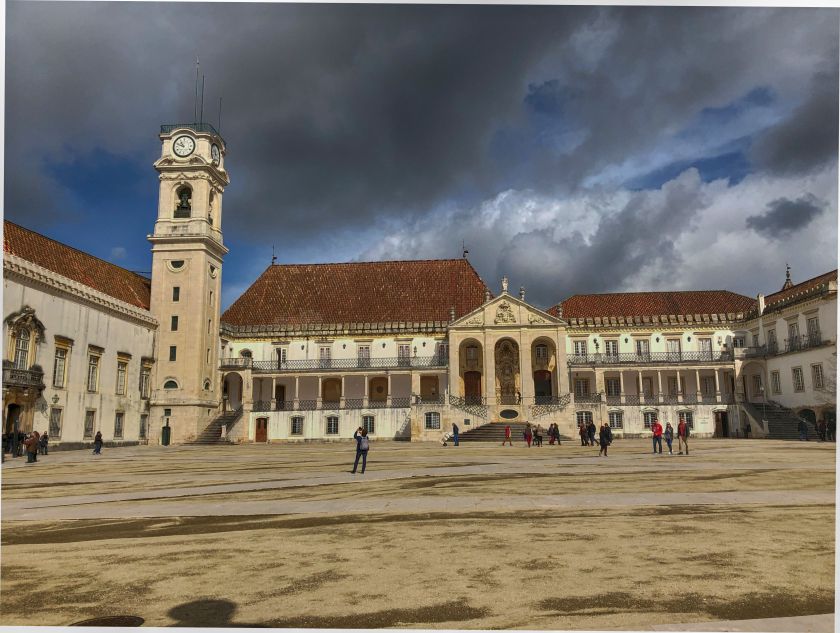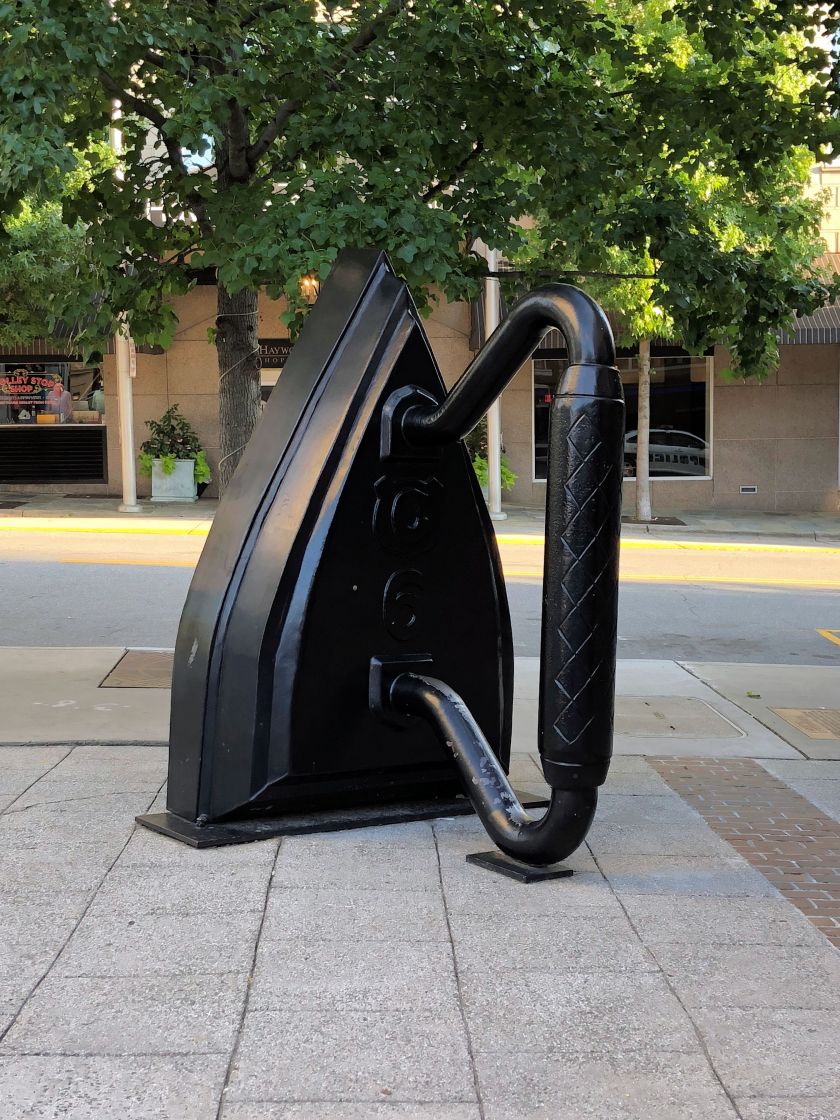Gyre is a sculpture by North Carolina artist Thomas Sayre. The three huge rings were created on site in 1999, using reinforced concrete. Circular trenches were dug, the reinforcements were placed and the concrete was poured. Once the concrete was dry and cured, the rings were lifted into place by crane. You can still see the circular depressions where the rings were formed before being raised in place.
Gyre is one of the centerpieces of the NC Art Museum Park. The sculpture is especially striking when, beginning at sunset, the rings are illuminated by flood lights. It’s quite a sight.









